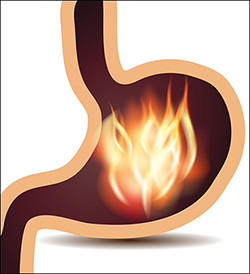DISEASE PROCESS and SPECIAL DIAGNOSIS
METHODS OF AYURVEDA
By Dr Kavita Vyas
Before understanding how ayurveda consultant diagnoses the patients in a unique way, we will understand how diseases produce in one’s body according to ayurvedic point of view.
According to ayurveda for diagnosing a disease five steps are important.
1. Nidana (root cause of the disease) - Physician should thoroughly study the root cause of the disease. It may be due to wrong food habits, wrong life style, or due to climatic changes etc.(for example cold can occure after getting wet in rain or after eating bananas too.)
2. Purvarupa (pre symptoms of the disease) - Before disease comes in its full intensity, it produces certain pre symptoms in the body; physician has to know pre symptoms for better diagnosis.(for example before fever one feel pain in whole body)
3. Rupa (main symptoms) - Ones disease has expressed in the body with it full symptoms , by knowing these symptom physician can prescribe a proper line of treatment and can also predict how long it will take to cure.(For example high temperature in fever)
4. Upashaya (homologous ness with certain things) - The food and activities which are apposite in nature with cause of the disease (having ginger tea in cough and cold)or apposite in nature with disease it self (having cold shower in fever)or apposite to both the cause and the disease(for example having antidiarrheal medicine which improves digestive fire, as root cause of diarrhea is the impairment of digestive fire), when such food or activities are used then it gives relief in disease this is called as upashaya.
5. Samprapti (etiology of the disease) - By knowing exact etiology of the disease, what doshas are involved in this disease and what tissues (dhatu) got affected etc help the physician to come to a certain conclusion about the disease.(For example according to ayurveda in rhumetoid arthritis, first due to wrong food habbits Ama(undigested food mass) produces in stomach, which increases toxins in blood and these toxins get deposited in joints resulting in to arthritis
The Disease Process
According to ayurveda the disease process can be summarized in a simple way. The humors (doshas) undergo increase by aggravating factors (diet, climate, seasons, life-style, emotions etc.). These causes weakening of the digestive fires, which in turn allows an undigested food mass (ama). This ama with the increased doshas blocks the channels and becomes deposited in any weakened site in the body; from that site the disease manifests.Ayurveda explains six stages in the disease process.
1. Accumulation (sanchaya) - The humors(doshas) begin to increase in their respective locales, due to wrong diet, seasonal male adjustments, wrong life style, psychological disturbances and all the usual factors that increase a particular humor.
Vata dosha-accumulates in the colon causing distention, gas, constipation, insomnia, fear, fatigue, dryness and seeking of warmth.
Pitta dosha –accumulates in the small intestine producing burning sensation, fever, hyperacidity, bitter taste in the mouth, yellow coloring of urin and stool, desire for cold things and anger.also thirst and difficulty in sleep.
Kapha dosha- accumulates in the stomach resulting in heaviness, pallor, bloating, indigestion and desire for light food. Nausea, excess sleep.
2. Aggravation (prakopa)- The humors continue to increase in respective sites, bringing about an increase in the symptoms( which are mentioned in accumulation stage) and by the pressure of this accumulation person get reflex symptoms elsewhere.
3. Over flow (prasar) - The humors have now filled up their respective sites and begin to over flow in the rest of the body. They enter in to the plasma and blood, spreading out of the gastro intestinal tract. The humors are no longer localized and can now penetrate in to the organs and tissues of the body. They come in to close contact with the tissues and waste materials of the body and become mixed with either of them. They move in different directions causing various disorders and dysfunctions.
Vata Dosha - causes dry skin, pain or stiffnes4s of the joints lower back pains, convulsions, spasm, headache, dry cough, intermittent fever, abdominal pain, constipation and painful bowel movements.
Pitta Dosha - causes inflammatory skin diseases, conjunctivitis, gingivitis, dizziness, headache, high fever, vomiting as well as diarrhea with burning sensation.
Kapha Dosha - causes cough, asthma, swollen glands, low grade fever, vomiting, swelling of the joints, and mucus in the stool.
4. Relocation (sthana samsraya) - The humors now relocates themselves now in the other sites in the body where they begin to cause specific disease. Usually those sites which are weak or the vulnerable are the ones taken . For example in arthritis they would deposit themselves in the joints and accumulate there. The symptoms now tend to become more fixed , where as in the overflow state they tend to move around.
5. Manifestation (Vyakti) - The humors manifest specific symptom complexes at these particular sites. We can now identify the disease as asthma, diabetes, arthritis or whatever it may happen to be.
6. Diversification (Bheda) - At these particular sites the humors manifests their special characteristics. The disease can be identify according to those attributes of the three humors which it possesses, for example Vata type arthritis will evidence sever pain, cold, stiffness, dry skin, and constipation. While Pitta type will show fever, burning sensation, red swelling of the joints, and loose stool. Kapha will demonstrate swelling edema, phlegm and congestion.
Diagnosis Methods of Ayurveda
In different ayurvedic texts there are different types of diagnosis methods described. In ancient days when there were No x-rays, ultrasound and MRI machines available, that time also our Ayurvedic doctors used to diagnose the exact problem of the patients by using ancient diagnosis methods. We are giving short information about Ashtavidha Pareeksha, which is more in use among ayurvedic physicians. .
Ashtavidha Pareeksha
It includes eight methods of diagnosis.
1. Nadi pareeksha (Pulse Diagnosis)- Nadi pareeksha in ayurveda doesn’t mean only the counting pulse rate. Nadi pareeksha it self is a different subject,which is scientifically explained by the ancient ayurveda scholars like Maharshi Poulastsya, Maharshi kanada and Achrya sharangdhara etc.
Under this science of Nadipareeksha an experienced ayurvedic consultant examine the pulse of the patient when he/she is empty stomach.By examining pulse that consultant can tell the whole picture of your body, what diseases you are suffering from and how long treatment you require and many more things about your self, also he can explain you some features about your personality which you only know. In India there are selected people who are doing nadipareeksh. I myself learnt from a aged vaidya
ayurvedic doctor) famous as G. G.Nisal Vaidya in indore (M.P.), He is no more in his body. Still few experienced ayurvedic doctors are alive in India who are giving this knowledge to new generation. Nadi pariksha can be learned by experience only. Initialy when one put his/her finger on the pulse,it is difficult to diagnos what dosha is aggravated or in balance. After practicing for years, one gets fine tuning in diagnosis of diseases.
2. Mutra pareeksha (Urine examination)-Under this different traditional way of examining the urine are explained, These methods are very scientific.
In a clean vessel collect the early morning urine in mid stream. Observe the color, if the color is blackish brown, this indicates a Vata disorder, if the color is dark yellow, this indicates a pitta disorder, also when body has less intake of water color will be dark yellow.If the urine is cloudy, it’s a Kapha disorder. Red color in the urin indicates a blood disorder.
Tail Bindu Pareeksha (Oil drop test)
Put one drop of sesame oil (with a dropper) in the sample of urine, if the drop spreads immediately, the physical disorder is easy to cure, if the drop sinks to the middle of the sample, means disorder is difficult to cure, if the drop sinks to the bottom of the sample, then the illness is very difficult to cure.
If urine has a foul odor that indicates, there are toxins in the system. A sweet smell of urine indicates possible diabetic condition.Ayueveda says if ants are making groups on the urine that means diabetes is there, because ants like the sweet tastes.
3. Mala pareeksha (Stool Examination) - Under this the ancient ayurveda scholars has given methods to examine the stool, which are helpful in knowing disorders of the digestive system.If stool floats on the water surface, it indicates there is no Ama Dosha in the system.If the stool sinks in the water or it is sticky in nature , this indicates there is Ama Dosha in the system.So one should take anti ama diet.
4. Jihva Pareeksha (Examination of the Tongue) - This examination is very useful and modern days doctors also do this.
5. Shabda Pareeksha (Examination of Speech) - When a patient talks, a physician can know lot of things about patient by his way of talking and quality of speech.
6. Sparsha Pareeksha (Examination by Touch) - Nowadays this method is known as palpitation and percussion.
7. Drug Pareeksha (Examination of Eyes) - By seing the eyes of patient a physician can know lot of things. Coulor of the eye, size of the eye, redness in the eye and other features denotes different diseases and doshas.
8. Akriti Pareeksha (Examination of Physic) - By observing the body buildup or physic of a patient, physician can know his/her health condition.
Some other methods like prashna pareeksha (questioning) also mentioned in ayurveda, we can say it is like history taking, by asking different question to the patients. Modern doctors also take history in the same way.
After diagnosis of the diseases, they are categorized in three levels.
1. Sukhasadhya - The one which is easy to cure, is called as sukhasadhya disease.
2. Kricchasadhya - The one which is not easy to cure is called as Kricchasadhya disease.
3. Asadhya - One which can not be cured, is called as Asadhya disease.
In every disease Ayurveda texts have described the symptoms of Non curable (Asadhyavastha) stage, and advised to ayurvedic doctor that he should not cure the disease when it is in Incurable stage, or should not cure the patient who is not having faith in doctor or in medicine system.
(See youtube video below on dosha)




![ACHARA RASAYAN in Ayurveda [Behavioural regimen which acts as Rejuvenation]](https://blogger.googleusercontent.com/img/b/R29vZ2xl/AVvXsEgWmm8CupFTu_vyWDtEsY9EdG8A-ZlQLOdx6lrm4qnctDJ1bli1zR7MQMebwL79XhXowikAcqIk-al0sQubhTttS6H69e3zIBK-UORc5BFH9eaWwkznPG-yWHqoQ-za1gNhVqwgwomwUiKA/w680/Screenshot_20191227-154658_YouTube.jpg)

0 Comments